I am hard at work writing our new comic on the history of musical borrowing, with my two brilliant co-authors, Jennifer Jenkins and Keith Aoki.
After our first comic (which has been downloaded over 300,000 times from our site alone and which also sold lots of copies despite being available for free) one question I got asked a lot was “how do you actually create a comic?” For me, learning how to design and write the comic (Keith does the drawing) was both very hard and a lot of fun. If you are an academic, your minimum atomic unit of linguistic meaning is the paragraph, maybe the page. Having to reduce complex, technical ideas into images and speech bubbles — no footnotes! no complex dependent clauses! — was a form of creativity unlike anything I’d done before.
This is the first page of the comic… at least so far. Jennifer and I do the initial design. We send Keith a script with parallel columns — images on one side and text on the other.
The instructions look something like this
AK It is 1812, and that’s Francis Scott Key watching Fort McHenry being bombarded by the British..
(cannon ball soars from scene, drops in water in front of AK, JB, JJ… steaming)
..he wrote a poem about it in 1814, called “The Defense of Fort McHenry”,
.. AK picks it up at first it reflects him and then changes to show Anacreon drinking scene
but it didn’t achieve true fame until he set it to the tune of “The Anacreontic Song” – a British drinking song from 1778 – and it became
[Cannon ball clouds and clears to show 15 star flag]
JB, JJ together
“The Star Spangled Banner”….
AK Which became the musical emblem of the nation.
[flag morphs into butterfly shape…]
AK ..so in 1898 when Puccini wrote Madame Butterfly, he made it the theme of Pinkerton, the American naval officer…
[Butterfly morphs into Stratocaster]
AK ..but even a Pinkerton detective couldn’t have imagined what the song would sound like, 71 years later, played by a young man called….
JB and JJ Jimi Hendrix!!
Then Keith applies his genius and sends us a sketch that looks something like this.
Our research on the borrowing in US patriotic songs becomes a list of instructions like this
which in turn becomes
Then we revise and redesign by phone and skype — there are always more words you can cut, more ways to use images to convey the meaning. We try and catch our errors and we are given our instructions for revision. (Jennifer is not only a researcher extraordinaire, she is also the queen of the task list.) Keith redraws more firmly, the final stage before inking…
The comic flies through 2000 years of musical history, the development of the unruly technologies that allowed us to think that music can be owned (notation, printing, recording, digital distribution), the changes in musical practice and attitudes towards composition, quotation and owning, and the introduction of the law into it all. Researching it has been utterly fascinating — and writing it has been a blast. What does the final inked version look like? If all goes as planned, sometime in Spring 2011 you’ll be able to find out.

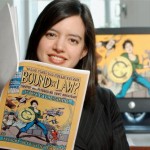


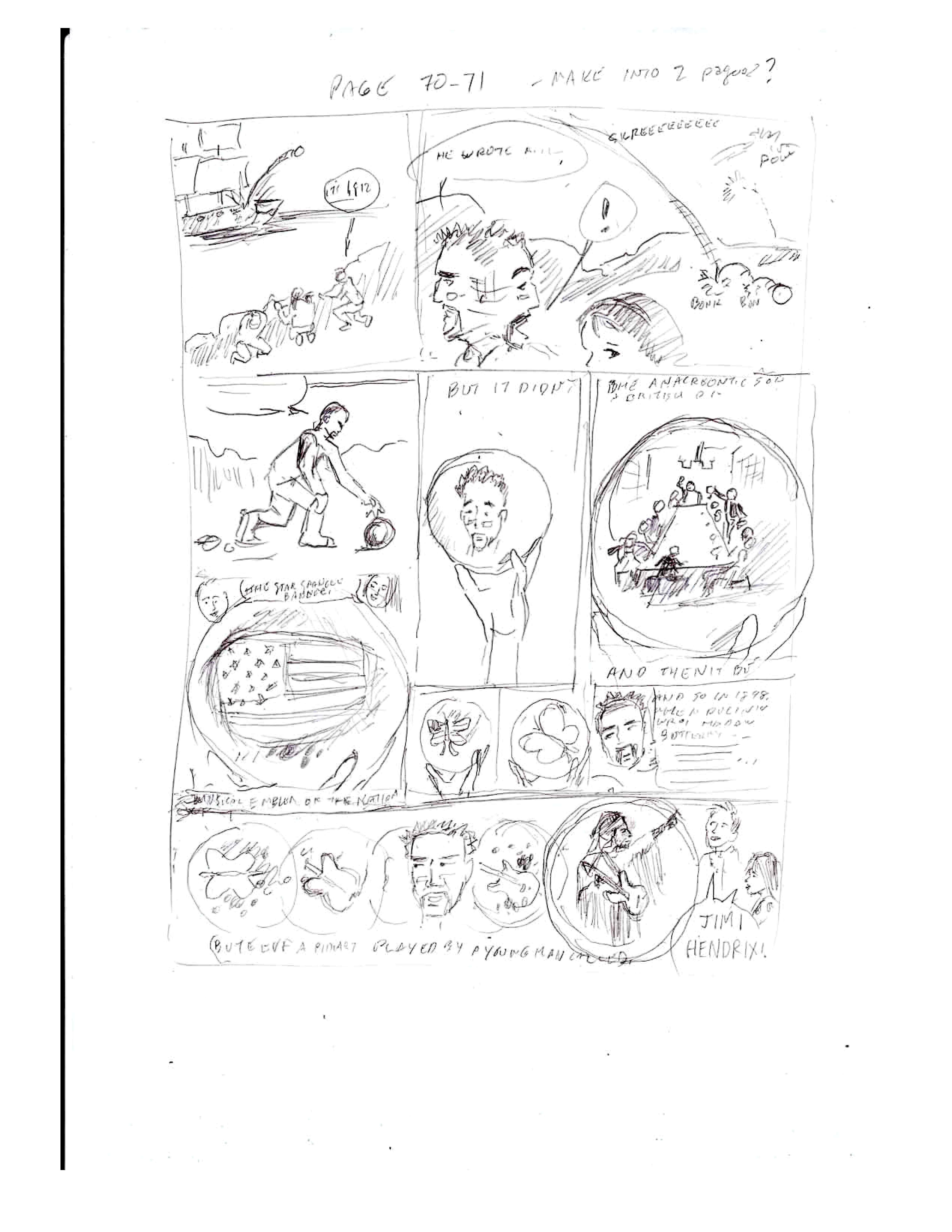

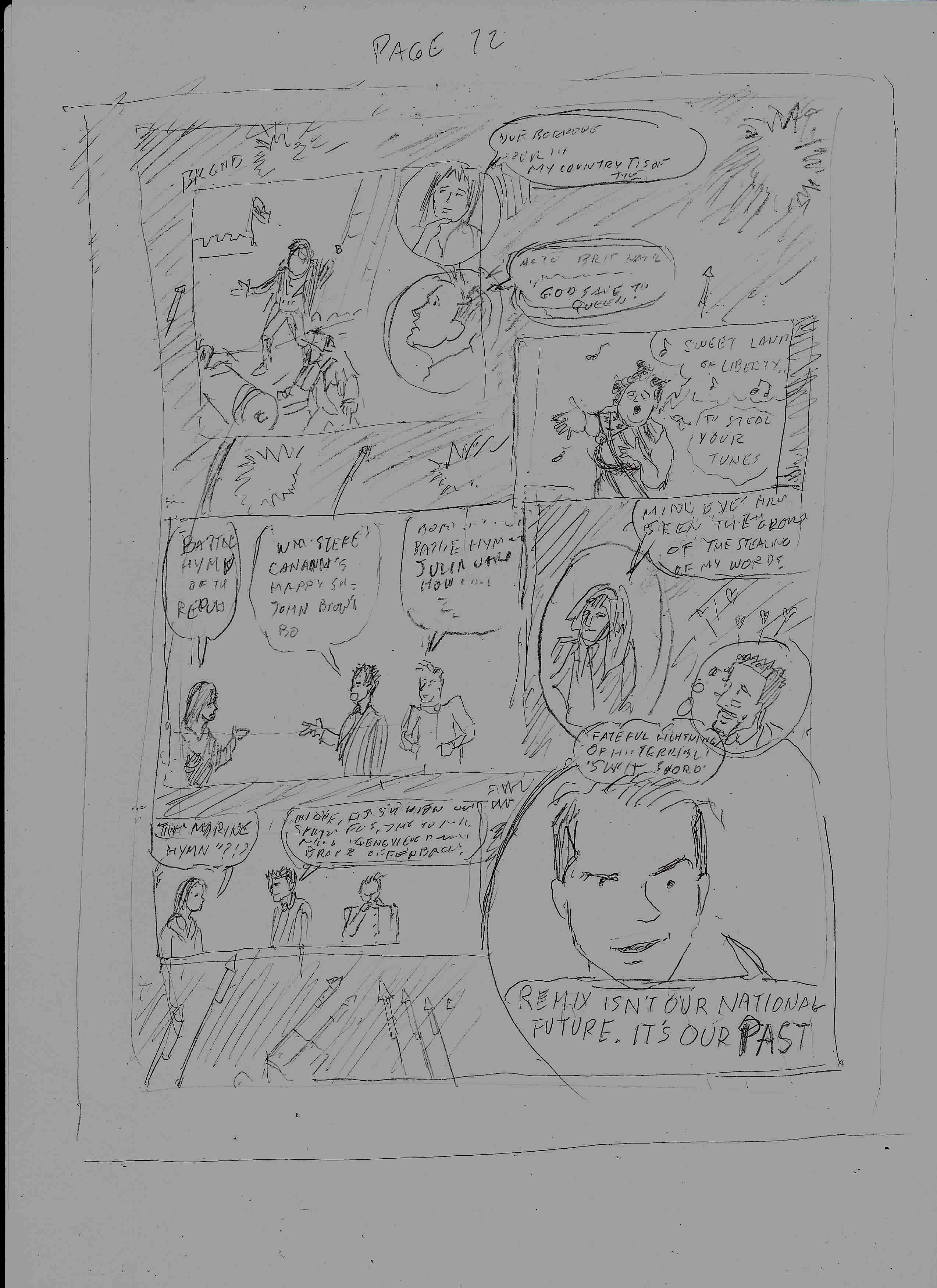
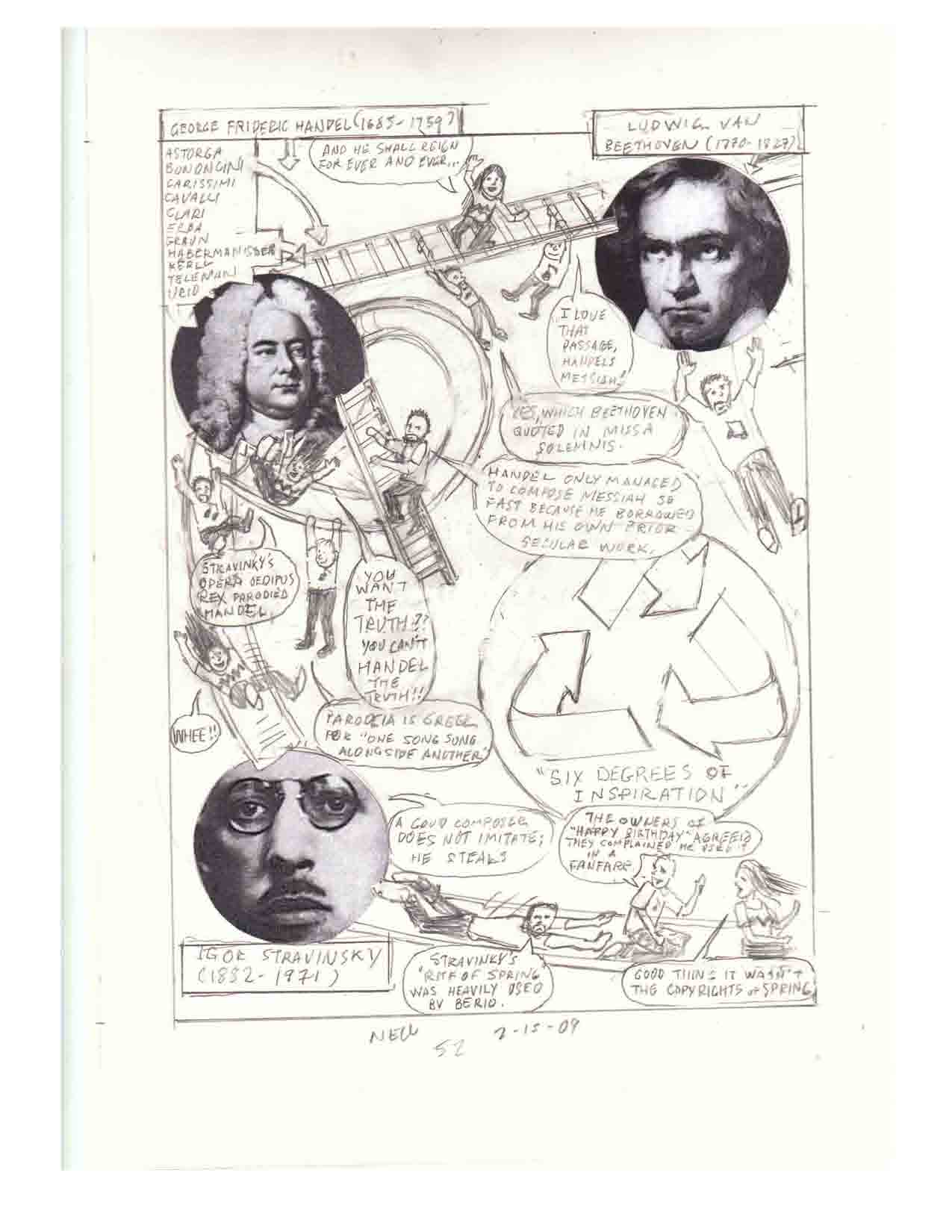
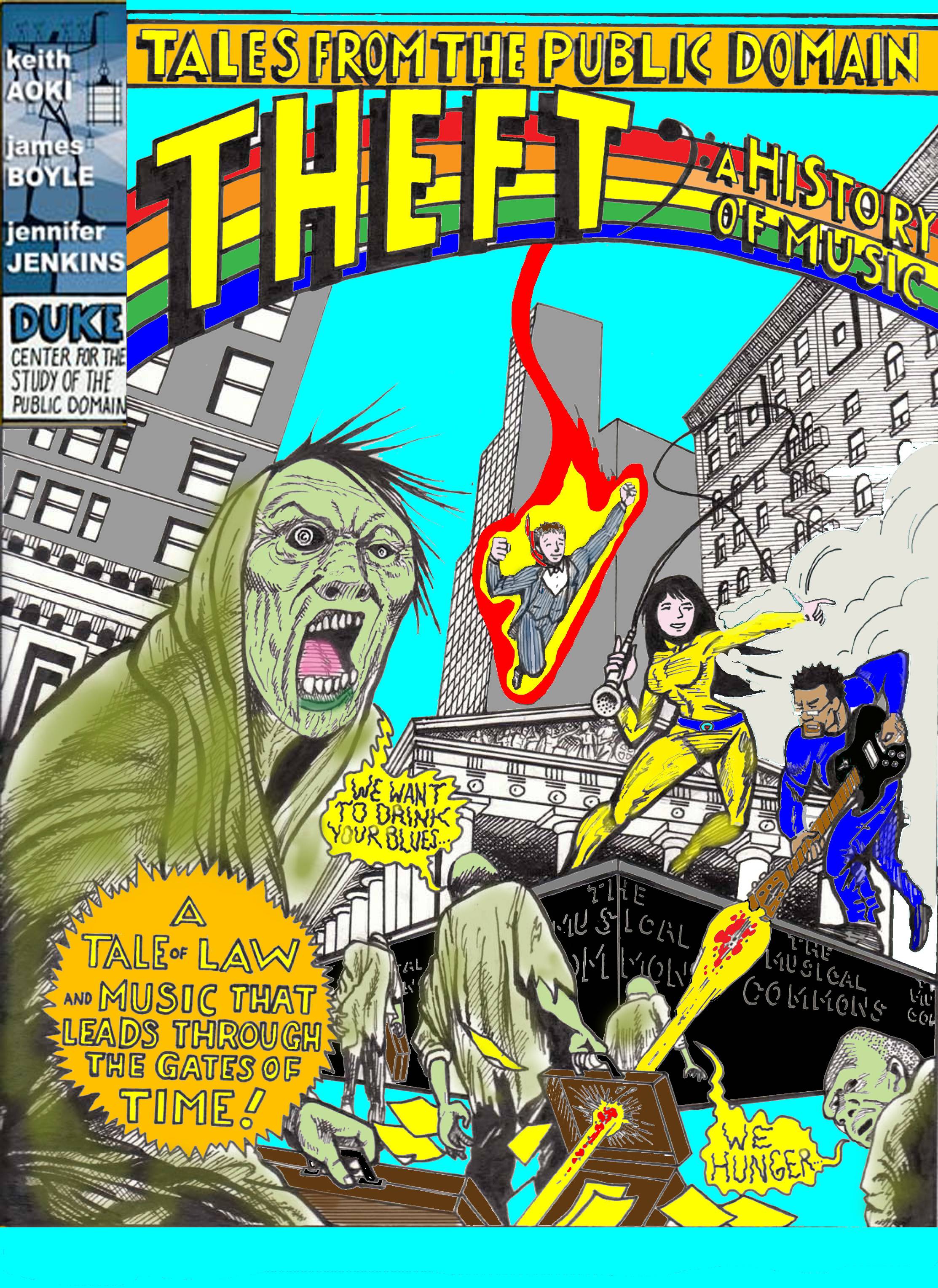
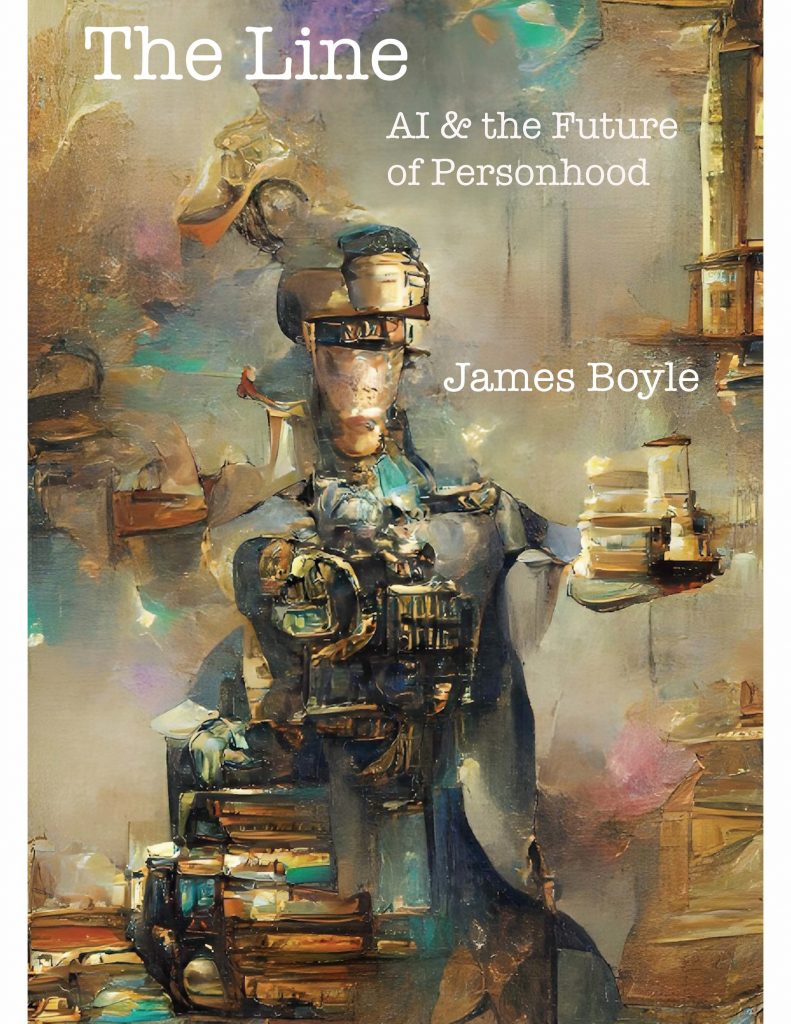

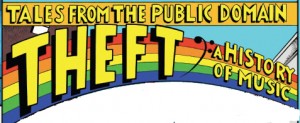



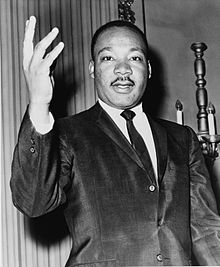
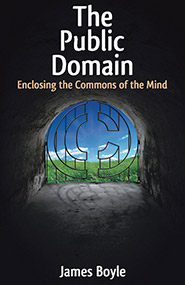
I’m looking forward to the book’s appearance.
Don’t forget to add Gottleib Muffat (1690-1770) to the list of Handel’s sources:
https://home.telepath.com/~hrothgar/muffat_to_handel_c.html
There I rely on Sedley Taylor’s argument to establish Muffat’s priority:
https://books.google.com/books?id=F-oPAAAAYAAJ page 1ff.
Since Taylor’s 1906 book it has been found that Muffat’s Componimenti was advertised in the journal Wienerisches Diarium in 1739, indicating that it had already been published by then, or soon would be. This is right around the time that Chrysander and other scholars have surmised, and well before Handel began work on Theodora.
https://books.google.com/books?id=XxDisZxtRBcC&pg=PA90